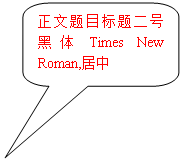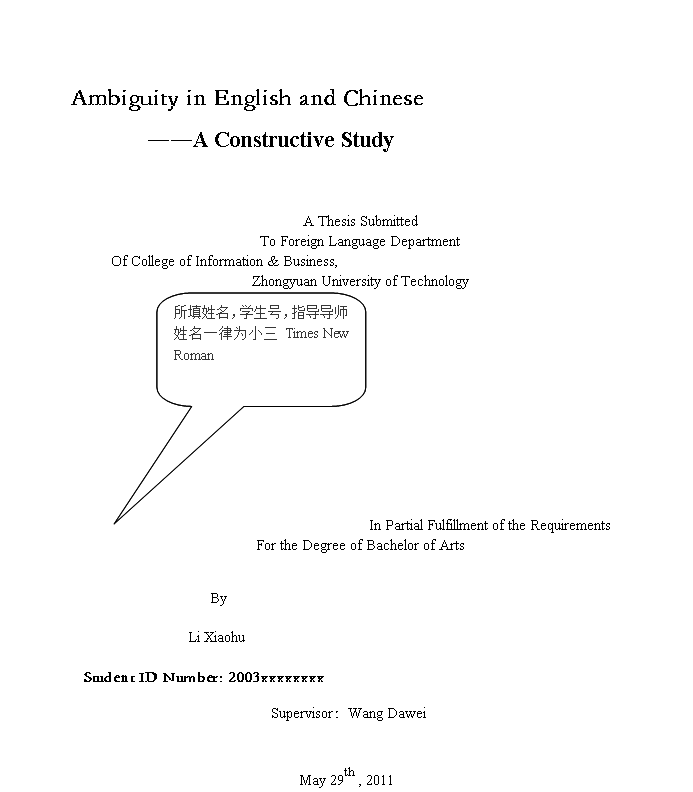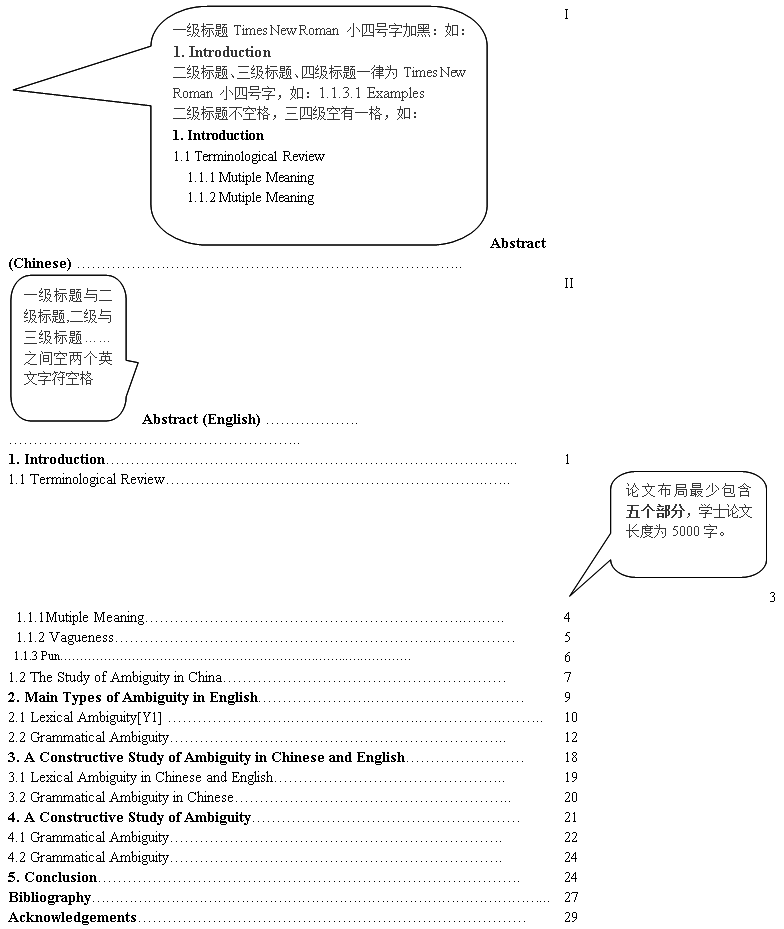


论 文 摘 要

性别是第二语言习得和外语学习中学习者差异的重要因素之一,因此,语言性别差异的研究已经越来越受到重视。该论文通过对七十二名以英语为外语的大学生的调查问卷进行分析,研究性别差异对英语学习者的学习动机,策略运用,以及学习观念的影响,基于调查结果对英语教学提出建议。分析结果表明英语学习者在学习动机,策略运用,以及学习观念方面的确存在不同程度的性别差异。

 该研究建议教师通过各种课堂活动激发学生对英语国家文化的兴趣,针对男、女生性格差异,对其学习策略采取重点不同的培养和训练,并通过相互沟通的方式鼓励学生树立积极的学习态度,拓展适合于自己的学习方法。
该研究建议教师通过各种课堂活动激发学生对英语国家文化的兴趣,针对男、女生性格差异,对其学习策略采取重点不同的培养和训练,并通过相互沟通的方式鼓励学生树立积极的学习态度,拓展适合于自己的学习方法。
关键词:性别差异;学习动机;策略运用;学习观念




 Abstract
Abstract

 Gender is one of the learner variables that may play an important role in second language acquisition and foreign language learning, so that research on gender differences related to language has attracted more and more attention. This paper examines the self-reported study of 72 university students learning English as a foreign language in China, and focuses on the effects of gender differences on motivation, the use of language learning strategies and beliefs, and teaching implications are provided based on the result of the survey. The analysis reveals that gender differences do exist in motivation of learning language, the use of language learning strategies as well as beliefs about language learning.
Gender is one of the learner variables that may play an important role in second language acquisition and foreign language learning, so that research on gender differences related to language has attracted more and more attention. This paper examines the self-reported study of 72 university students learning English as a foreign language in China, and focuses on the effects of gender differences on motivation, the use of language learning strategies and beliefs, and teaching implications are provided based on the result of the survey. The analysis reveals that gender differences do exist in motivation of learning language, the use of language learning strategies as well as beliefs about language learning.
Based on the result of the analysis, the study suggests that the teachers should try to arouse the interests of the students learning the culture of English-speaking countries, carry out the strategy training according to the differences of the characters of male and female students, and through communication with the students encourage them to develop positive attitude towards their study and explore the methods suitable to their own characteristics.

Key words: gender differences; motivation; learning strategies; learners’ beliefs

摘要.....................................................................................................
Abstract...............................................................................................
1. Introduction.....................................................................................
2. A Brief Introduction to Consumer Culture .........................
3.Representation of Consumer Culture in Sister Carrie......................
3.1Carrie-the Spokeswoman of Desire and Consumer Culture ... ......
3.1.1Carrie’s Desire for Clothes ........................................................
3.1.2 Carrie’s endless Desire and Rocking Chair ..............................
4.Conclusion.....................................................................................
5.Bibliography......................................................................................

Table of Contents

 Table of Contents
Table of Contents

注:一级标题:小四号Times New Roman体加粗
二、三级标题:小四号Times New Roman体
正文页码插入居中
所有英文字体均为Times New Roman体
 1. Introduction(标题, 左对齐,加粗, Times New Roman,四号,以后所有章节各级标题都同此)
1. Introduction(标题, 左对齐,加粗, Times New Roman,四号,以后所有章节各级标题都同此)
 Language is at the center of human life. Language learning and language teaching are vital to the everyday lives of millions. All forms of language teaching could be greatly improved if we had a better understanding of the language learner and of the language learning process itself. In fact, many studies on English learners have been conducted in China, which indeed provide teachers and researchers with a deep understanding of the actuality of English learning in this country. However, while individual differences have attracted more and more attention, the factors that contribute to the relationship between gender and motivation, language learning strategies, and learners’ beliefs have not received adequate recognition.
Language is at the center of human life. Language learning and language teaching are vital to the everyday lives of millions. All forms of language teaching could be greatly improved if we had a better understanding of the language learner and of the language learning process itself. In fact, many studies on English learners have been conducted in China, which indeed provide teachers and researchers with a deep understanding of the actuality of English learning in this country. However, while individual differences have attracted more and more attention, the factors that contribute to the relationship between gender and motivation, language learning strategies, and learners’ beliefs have not received adequate recognition.
 It is at the beginning of the 20th century that scholars started to pay attention to the relationship between gender and language. Research on gender differences related to language has focused on cognitive functions. For example, studies have been conducted on a variety of differences among young school children (Robinson, 1996), college students, and adults as well as subjects with affective or communicative disorder. And other studies are related to language production as in conversation and addressed gender differences in spoken and written language output. Examples include Mulac and Lundell (1994) – written discourse.
It is at the beginning of the 20th century that scholars started to pay attention to the relationship between gender and language. Research on gender differences related to language has focused on cognitive functions. For example, studies have been conducted on a variety of differences among young school children (Robinson, 1996), college students, and adults as well as subjects with affective or communicative disorder. And other studies are related to language production as in conversation and addressed gender differences in spoken and written language output. Examples include Mulac and Lundell (1994) – written discourse.
Long (1991:76) argues that without this, outcomes such as those from immersion education are likely to occur, with a lack of sustained development.[z2]
Perkins and Gass (1996:46) argue that, since proficiency is multidimensional, it does not always develop at the same rate in all domains.[z3]
Sanders et al. (1992:89~91) studied coherence relations based on four criteria.[z4]
Lorenz voiced a very similar view that because in written communication, coherence cannot be explicitly negotiated face-to-face between text producer and text receiver,
“writers therefore have every reason for trying to be unequivocal and to make their ideas, intentions and arguments unmistakably clear. One way of doing this is to carefully signal logical relations and thereby ‘signpost’ the path to coherence for the reader. Consequently, when looking at the fabrication of coherence in written discourse, we need to pay special attention to those explicit signposts of coherence, i.e. the text’s cohesive ties”. (Lorenz, 1999:26).[z5]
Patterns of byzantine intrigue have long plagued the internal politics of community college administration in Texas (Douglas et al., 1997).[z6]
One validates not a test, but ‘a principle for making inferences’ (Cronbach & Meehl, 1955:297).[z7]
If construct validity is seen as an exhaustive process that can be accomplished over a 50-year period, test developers may be inclined to think that any validity information is good enough in the short run (Shepard 1993: 444, cited in Chapelle 1998).[z8]
In China, researches on gender language date back to the 1980’s, which are mainly about differences in men and women language forms. Most scholars put the focus on language form as related to gender, either by introducing achievements made by researches abroad or by exploring gender and language according to their own experience. And later, some researchers brought the study of gender and language to some differences in men and women language forms. Most scholars put the focus on language form as related to gender, either by introducing achievements made by researches abroad or by exploring gender and language according to their own experience. And later, some researchers brought the study of gender and language to a broader scope. From then on, there was an obvious shift from examining language form to exploring communication strategies and speech style. ……
 2. Theoretical Foundations
2. Theoretical Foundations
 2.1 Motivation
2.1 Motivation
The important involvement of motivation in learning English as a foreign language has been established for some time. There can be little doubt that motivation is a powerful factor in foreign language learning: most studies investigating the effect of motivation have found a relatively strong correlation between motivation and language learning success, with many finding motivation to be the most significant predictor of achievement. Motivation has also been found to affect the use of language learning strategies, with highly motivated students generally employing strategies more frequently than less motivated students in many types of foreign language programs (Ehrman & Oxford, 1989).
2.1.1 Definitions
 Although motivation is a term frequently used in both educational and research contexts, there is little agreement as to the exact meaning of this concept. The term has a number of different interpretations, and it has come to be used in different ways by different people.
Although motivation is a term frequently used in both educational and research contexts, there is little agreement as to the exact meaning of this concept. The term has a number of different interpretations, and it has come to be used in different ways by different people.
A simple definition is provided by Keller (1983) in current psychology: “motivation refers to the choices people make as to what experiences or goals they will approach or avoid, and the degree of effort they will exert in that respect”
2.2 Definitions
Although motivation is a term frequently used in both educational and research contexts, there is little agreement as to the exact meaning of this concept. The term has a number of different interpretations, and it has come to be used in different ways by different people.
A simple definition is provided by Keller (1983) in current psychology: “motivation refers to the choices people make as to what experiences or goals they will approach or avoid, and the degree of effort they will exert in that respect” (Crookes & Schmidt, 1991: 481). This definition gives readers an initial idea about what motivation is. By this definition, motivation includes making choices and exerting efforts.
Kanfer (1992) developed the definition of motivation by indicating that motivation refers to
(省略)
 Bibliography
Bibliography
Alverez, A. (1970). The savage god: A study of suicide. New York: Random House. pp. 32-50.[z9]
 Christie, John S. (1993). Fathers and virgins: Garcia Marquez's Faulknerian. Chronicle of a Death Foretold.Latin American Literary Review, 13(3), 21–29.[z10]
Christie, John S. (1993). Fathers and virgins: Garcia Marquez's Faulknerian. Chronicle of a Death Foretold.Latin American Literary Review, 13(3), 21–29.[z10]
Hsiung Ping-chen, “The Relationship Between Women and Children in Early Modern China”, Paper presented at the Seventh Annual Convention of National Women’s Studies Association, Seattle, June 1-3, 1985.[a11]
In an Introduction to Literature lecture at Capital Community College on April 14, 2004, Professor Charles Darling described William Carlos Williams' poem as a barnyard snapshot (C.W. Darling, ENG 102 lecture, April 14, 2004).[z12]
Lake, F. L. (Author and speaker). (1989). Bias and Organizational Decision Making [Cassette]. Gainesville: Edwards. [z13]
Nadeau, B. M. & Darling, J. M. (Eds.). (1994–2003). Studies in the History of Cutlery (Vols. 4–6). Utica, NY: Mohican Valley-River Press.[z14]
Natarajan, R., & Chaturvedi, R. (2003). Geology of the Indian Ocean Floor. Hartford, CT: Merganser University Press.[z15]
National Institute of Mental Health. (1982). Television and Behavior: Ten Years of Scientific Progress (DHHS Publication No. A 82-1195). Washington, DC: U.S. Government Printing Office.[z16]
New exam for doctor of future. (1989, March 15). The New York Times, p. B-10.[z17]
Office of the Trade Representative. 1999. North American Free Trade Agreement [On-line]. Available Telnet: liberty.uc.wlu.edu.[z18]
Redford, R. (Director). (1980). Ordinary people [Film]. Hollywood: Paramoun[z19]
Safer, M. (Narrator). (2004). Torture at Abu Ghraib [Television broadcast]. Hartford: WFSB.[z20]
Stanton, D. C., & Farbman, E. (Eds.). (2003). The Female Autograph: Theory and Practice of Autobiography. Middletown, CT: Ibis Bookstore Press.[z21]
Shorter Oxford English Dictionary (5th ed.).(2002). New York: Oxford University Press.[z22]
Xu Xiaoqun, “State and Society in Republican China: The Rise of Professional Associations in Shanghai, 1912-1937,” (Ph. D. dissertation, New York: Columbia University, 1993), pp. 5-8.[a23]
陈治安,匡兰,陈治安等,2002,《英汉主术位结构比较研究》,外语教学与研究出版社[a24] 。
蔡小红,方凡泉,2003,《口译质量和效果评估》,外语与外语教学出版社,第40-45页。
李长算,胡爱平,2000,“试论翻译史”,《中国翻译》第三期:第54-56页。
刘和平,梅德明,钱伟,2001,《口译技巧-思维科学与口译推理教学法》,中国对外翻译出版公司。
秦秀柏,1997,《文体学概论》,湖南教育出版社,第20-23页。
注:中文格式参考英文,标点符号都用中文符号
Acknowledgements

 (内容省略)
(内容省略)
不能只有
一个二级、三级标题,或四级标题;每个级别标题下至少有两个部分。
一位作者的文章正文中的引用
多位作者的文章正文中的引用
6位以上作者的文章中
在直接引用文献时,如所引用的内容较长(超过50单词),则应该另起一段,左右缩进。用五号Times New Roman体
多位作者著作的引用
两位作者著作的引用
转引用
单个作者著书
格式:
作者+英文句号+空一格+(出版年代)+英文句号+空一格+斜体书名+英文句号+空一格+出版地+出版社+原文页码+英文句号
学术期刊
格式
作者+英文句号+空一格+(出版年代)+英文句号+空一格+文章名+空一格+斜体期刊名+英文逗号+期刊期数+英文逗号+原文页码+英文句号
国际会议论文
格式:
作者+文章名+回行TAB键+发表会议+地址+日期
课堂讲义
格式:
课程+讲授者+内容+(讲授者+地点+时间)
磁带
格式:
作者+年代+名称+地点+出版社
多卷专著
格式:
作者+年代+书名+地点+出版社
两个或以上作者著书
格式:
作者+年代+书名+地点+出版社
政府文件
格式:
机构名+年代+文件名+地点+印刷单位
报纸
文章名+报纸时间+报纸名+版面页码
网上资源
出处+时间+名称+网址
电影
导演+年代+电影名+地点+电影公司
电视节目
幕后解说员+年代+电影名+地点+电视台
单卷专著
格式:
作者+年代+斜体专著名+地址+出版社
字典
格式:
斜体词典名字+出版年代+出版地址+出版社
学位论文
格式:
作者+论文名称+(论文属性+地点+院校+时间)+页码
只引用书上观点不需标出具体页
中文书目格式:
作者(三个以上用“等”)+中文逗号+出版年代+《书名》+出版社+中文逗号+出版社+页码(如直接应用)+中文句号
